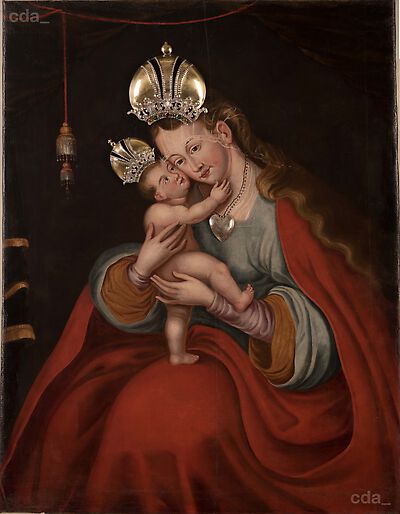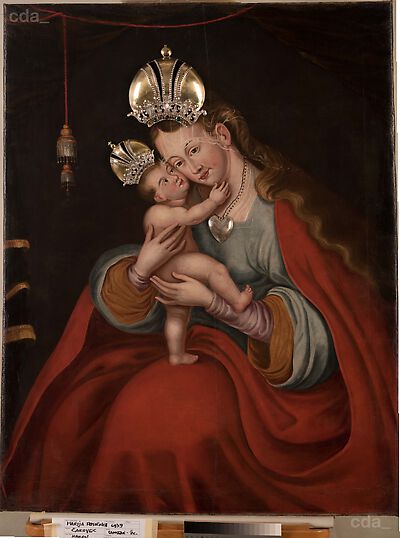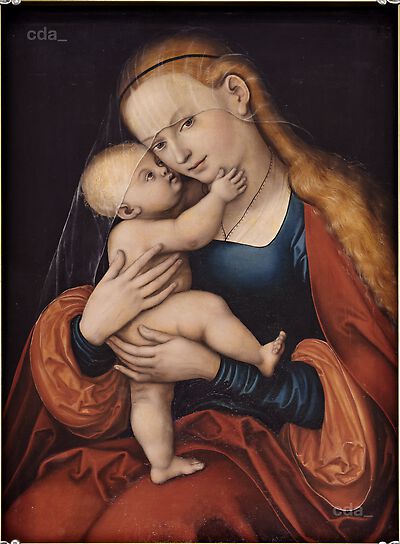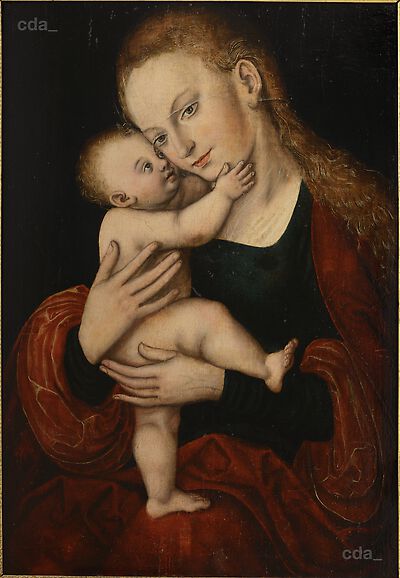- Attribution
- Copy after Lucas Cranach the Elder
Attribution
| Copy after Lucas Cranach the Elder | [cda 2017] |
- Production dates
- 1738
1738 - 1760
Production dates
| 1738 | [Cvitanovic; see attached pdf] |
| 1738 - 1760 | [Cvekan, 1978, 31- 33] |
| 1738 | [Lentic Kugli, 1971, 22] |
- Dimensions
- Dimensions of support: 112 x 87 cm
Dimensions
Dimensions of support: 112 x 87 cm
Dimensions of painted surface: 109 x 83 cm (Dimensions before the last treatment:
107 x 81 cm)
Dimensions of the large crown: 17 x 17 x 3 cm; weight: 170.5 g
Dimensions of the small crown: 11 x 11 x 2 cm; weight: 67 g
Dimensions of the heart: 6 x 5.5 x 1.5 cm; weight: 9.73 g
[Sambolic, Opis stanja, materijala i oštecenja na slici, 2016]
- Signature / Dating
None
- Owner
- Župna crkva i franjevacki samostan svetog Nikole
- Repository
- Župna crkva i franjevacki samostan svetog Nikole
- Location
- Cakovec
- CDA ID
- HR_StNC_001
- FR (1978) Nr.
- FR-none
- Persistent Link
- https://lucascranach.org/en/HR_StNC_001/



